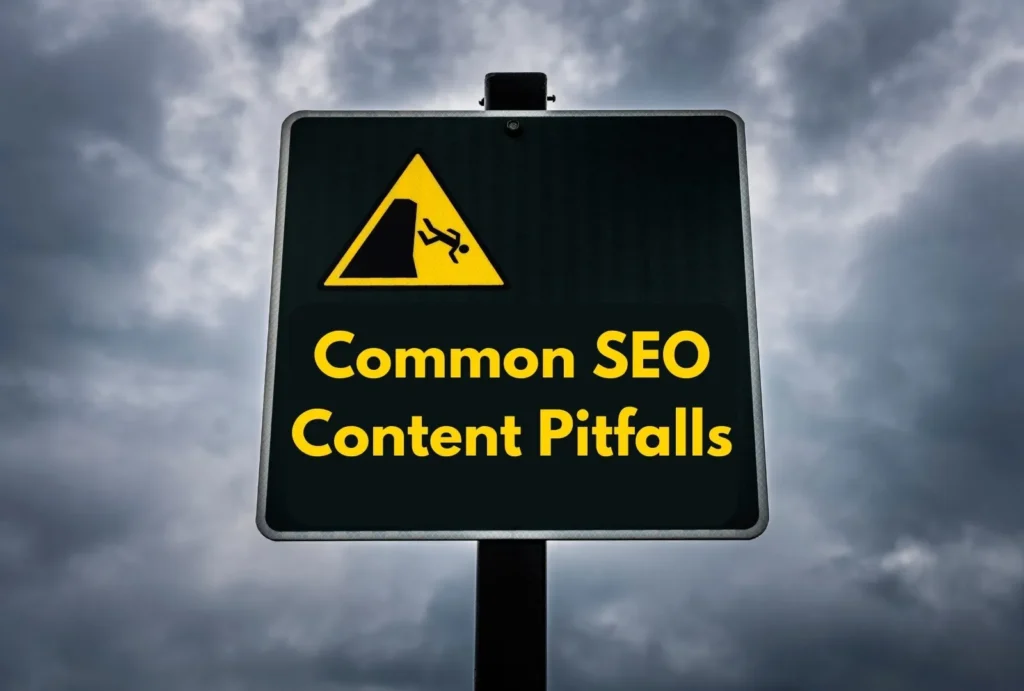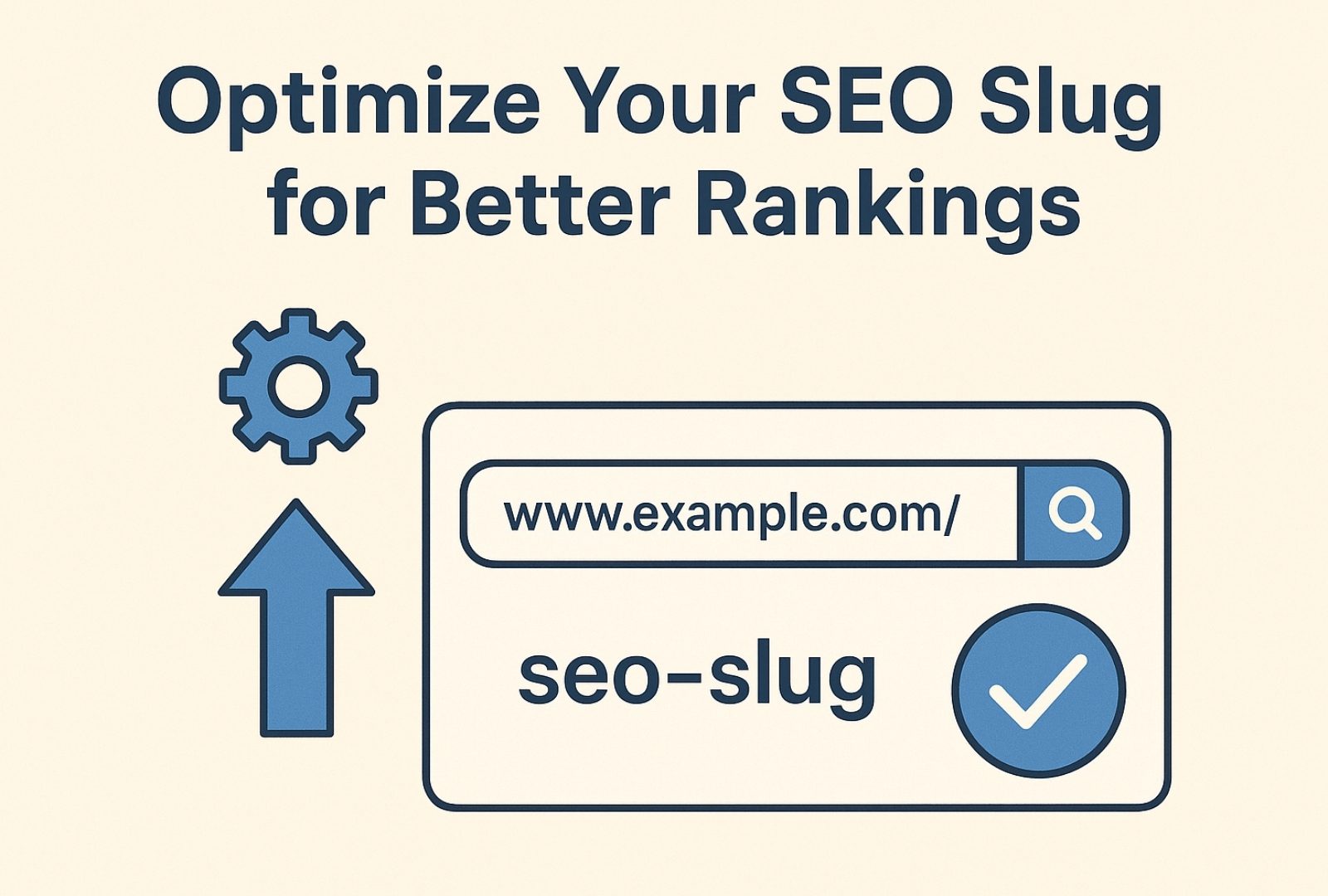The world of SEO can be difficult to navigate. It’s a complex field, filled with potential pitfalls that can derail your efforts. Avoiding SEO mistakes is crucial to ensuring your website performs well in search rankings.
One of the most common areas where SEO mistakes occur is in content creation. SEO content pitfalls can significantly impact your website’s visibility and rankings.
Overuse of keywords, for instance, can lead to penalties from search engines. Similarly, creating content solely for search engines, rather than human readers, can harm user experience.
Ignoring mobile optimization is another common pitfall. With the majority of web traffic now coming from mobile devices, failing to optimize for mobile can hurt your rankings.
Another common SEO mistake is neglecting local SEO practices. This can result in missed opportunities, especially for local businesses.
Regularly updating your content is also crucial. Failing to do so can make your site appear stale to search engines, negatively affecting your rankings.
In this article, we’ll delve into these and other common SEO mistakes and SEO content pitfalls. We’ll provide actionable advice on how to avoid these mistakes and improve your SEO strategy.
Understanding SEO Content Pitfalls
SEO content pitfalls are common traps that can undermine your site’s performance. They stem from various factors, including inadequate planning and a lack of understanding of SEO best practices.
Many website owners and marketers focus solely on search engines. This often leads to content that sacrifices user experience. Content should primarily cater to human readers, providing value and relevant information.
Another overlooked factor is failing to stay updated with SEO trends and algorithm changes. Content ranking is impacted by periodic changes to search engine algorithms. Keeping abreast of these developments is essential for maintaining and improving your rankings. Understanding these pitfalls helps in crafting a robust SEO strategy that effectively balances search engine requirements with user needs.
The Consequences of Ignoring SEO Best Practices
Ignoring SEO best practices can lead to significant setbacks. One major consequence is the potential drop in search engine rankings. This can drastically reduce your site’s visibility, making it hard for potential visitors to find you.
Another consequence is increased bounce rates. If your content does not engage visitors due to poor optimization, they are likely to leave your site quickly. This not only affects user experience but can also signal to search engines that your content lacks relevance or quality.
Lastly, neglecting SEO can hinder your site’s authority and trustworthiness. Inconsistent or poorly optimized content may lead users to view your site as unreliable. This will ultimately affect your reputation and limit your reach in the digital space. Embracing SEO best practices is not just about boosting rankings; it’s about building a credible and user-friendly online presence.
Pitfall 1: Keyword Stuffing and Over-Optimization
Keyword stuffing is the overuse of keywords with the intent to manipulate rankings. It’s tempting to pack keywords into content, but this tactic backfires. Search engines have become adept at detecting this and may penalize such practices.
Moreover, keyword stuffing compromises readability and user experience. Visitors might find the content awkward or irrelevant if keywords dominate the narrative. This can reduce trust and diminish your website’s credibility among users.
Over-optimization also impacts your SEO negatively. It’s not just about keywords but also includes excessive linking or anchor text. Striving for a natural flow is key. As search engines prioritize user experience, striking a balance in optimization is essential. Here are some signs of over-optimization:
- Repeating keywords excessively within the text
- Forcefully inserting keywords into anchor texts
- Using the same keyword in meta tags
How to Avoid Keyword Stuffing
To avoid keyword stuffing, think quality over quantity. Use keywords naturally and where they make sense in the context. It’s beneficial to focus on providing value rather than just inserting keywords.
Incorporate related keywords and synonyms to maintain variety and depth. This ensures the content doesn’t sound forced or repetitive. Emphasizing readability will create a more engaging and user-friendly experience. Always aim to write for human readers first.
Pitfall 2: Neglecting Mobile Optimization
In today’s digital age, mobile optimization is not just an option but a necessity. With an increasing number of users accessing the internet on mobile devices, having a mobile-friendly website is crucial. Google prioritizes mobile-friendly sites in search results, making this a vital SEO factor.
Poor user experience might result from ignoring mobile optimization. Slow loading times and difficult navigation can drive mobile users away. If your site isn’t optimized for mobile, you risk losing potential visitors who won’t tolerate such inconveniences.
Mobile optimization also involves more than just a responsive design. It includes ensuring content displays correctly and functions seamlessly on all device sizes. Here are some common challenges related to mobile optimization:
- Slow page load times on mobile devices
- Buttons and links that are difficult to tap
- Content that is not visible on smaller screens
Tips for Mobile-Friendly Content
To create mobile-friendly content, simplicity is key. Focus on concise and clear headings to catch the user’s attention quickly. Break up text into smaller paragraphs to ease readability on smaller screens.
Responsive design is important, but so is fast loading. Compress images and limit heavy scripts to improve performance. Testing your site on various devices helps ensure that it delivers an optimal experience everywhere. Always keep the user in mind, and regularly revisit your mobile strategy for improvements.
Pitfall 3: Overlooking Local SEO Practices
Businesses that depend on local clients must prioritize local SEO. Ignoring this can lead to missed opportunities and reduced visibility. Many businesses make the mistake of not optimizing for local search.
Local SEO helps ensure your business appears in local search results. Without it, you might not reach potential customers who are searching for services in their area. This neglect can cost businesses valuable traffic and, ultimately, revenue.
An effective local SEO strategy is vital for staying competitive in your market. It’s not just about stuffing location names into your content. Focus instead on these key elements:
- Claiming and updating your Google My Business listing
- Collecting and managing customer reviews
- Incorporating local keywords into your content
Strategies for Local SEO Success
To succeed in local SEO, start by claiming your Google My Business listing. This puts your business on the map, literally and figuratively. Ensure all information is accurate and consistent across directories.
Local reviews can boost your local presence significantly. Encourage satisfied customers to leave positive feedback. Finally, produce content that resonates locally, using relevant events or local interests to engage your community. A strong local connection will naturally enhance your visibility and draw more local customers.
Pitfall 4: Failing to Update Content Regularly
Keeping content current is essential for maintaining its value. Many websites fall into the trap of neglecting updates, which can cause rankings to drop. Search engines favor fresh content because it tends to be more relevant.
Outdated content may lead to reduced user trust and lower engagement rates. When information is stale, users might look elsewhere for the most accurate data. This reduces the site’s effectiveness in drawing and retaining visitors.
Regular updates ensure that information remains accurate and relevant. Consider the following practices to maintain freshness:
- Revisit older posts and update statistics or facts
- Add new insights or sections to existing articles
- Remove outdated or irrelevant content
The Importance of Content Freshness
Fresh content signals to search engines that your site is active and reliable. Better visibility in search results may result from this. Additionally, up-to-date content enhances user experience by providing current and accurate information.
Content updates should not be overlooked in an SEO strategy. Users appreciate and engage more with timely information. Freshness conveys authority and commitment to quality, encouraging return visits and boosting engagement.
Pitfall 5: Duplicate Content Issues
Duplicate content can significantly impact your website’s SEO. Search engines struggle to decide which version to show in search results. This confusion can dilute the ranking potential of a page.
Having the same content in multiple places can lead to lower search rankings. It also poses a challenge for users who may question which source to trust. Ensuring unique content across your site helps improve search visibility and user trust.
To manage duplicate content, conduct regular audits to identify and address duplicates. Use canonical tags to signal your preferred version to search engines. Implement the following strategies:
- Avoid copying content from other sites without permission.
- Use 301 redirects for duplicate URLs.
- Regularly monitor pages for duplication issues.
How to Handle Duplicate Content
Managing duplicate content requires a proactive approach. First, identify which pages are causing the issue using SEO tools. Then decide on the best method to tackle it.
Choose strategies like consolidation of duplicate pages. Employ canonical tags to guide search engines towards preferred URLs. Addressing these issues swiftly helps maintain SEO integrity and strengthen search rankings. Regular checks ensure duplicates don’t reoccur and harm your SEO efforts.
Pitfall 6: Inadequate Internal Linking
Internal linking is crucial for SEO as it aids site navigation. Many sites neglect this, leading to poor user experience and lower rankings. Effective internal links help distribute page authority across your website.
When internal links are sparse, search engines may not properly index all pages. Users may also find it difficult to discover related content. This can result in missed opportunities for engagement and retention.
A strategic internal linking structure helps guide both search engines and users. It improves crawlability and strengthens your site’s architecture. Consider these approaches to enhance internal linking:
- Create contextual links in your content.
- Link to high-priority pages with keyword-rich anchor text.
- Ensure links are relevant and add value to the user.
Best Practices for Internal Linking
To optimize your internal linking, focus on relevance and user intent. Each link should naturally fit within the context of the content.
Regularly update your existing pages to include new links to recent content. Use internal links to highlight important pages, improving their visibility and authority. This not only enhances user engagement but also boosts SEO performance.
Pitfall 7: Ignoring Meta Descriptions and Title Tags
Meta descriptions and title tags are vital for SEO. They are often ignored, leading to diminished click-through rates. They serve as a concise summary of your page in search results.
You may get people to click on your link with a well-written meta description. It’s your first opportunity to attract potential visitors. Not optimizing these elements means missing a chance to influence search engine users.
Without effective title tags, your pages might not rank well. Search engines rely on them to understand the content’s relevance. Here are a few ways to improve your meta tags:
- Use unique, descriptive titles for each page.
- Incorporate primary keywords naturally.
- Keep descriptions within 155-160 characters to avoid truncation.
Crafting Effective Meta Descriptions and Titles
Creating impactful meta descriptions and titles involves understanding your audience’s needs. Use compelling language to convey your message.
Align your meta information with the search intent. This increases the likelihood of clicks and enhances user engagement. Tailoring these elements to each page will provide greater value and improve your SEO outcomes.
Pitfall 8: Not Optimizing for User Engagement
User engagement is critical for SEO success. It reflects how users interact with your website content. High engagement signals your content’s relevance to search engines.
Ignoring user engagement can result in higher bounce rates. This negatively impacts your search rankings and overall visibility. Engaging content encourages users to stay and explore more of your site.
Failure to optimize for engagement leaves potential untapped. Visitors might leave without converting into leads or customers. Focus on these engagement factors to improve user interaction:
- Ensure fast-loading pages to retain visitors.
- Use compelling visuals and clear calls-to-action.
- Encourage comments and social sharing.
Enhancing User Engagement Through Content
To boost user engagement, create content that resonates with your audience. Understand their needs and preferences.
Use interactive elements like polls or quizzes to maintain interest. Update information frequently to maintain its relevance and originality. By prioritizing engagement, you improve user experience and ultimately support your SEO goals.
Pitfall 9: Overlooking Technical SEO
Technical SEO is the backbone of website optimization. Neglecting it can lead to poor search engine rankings. Many prioritize content but overlook technical elements.
These technical aspects ensure that search engines can crawl and index your site efficiently. Ignoring them might obstruct search visibility, impacting your site’s potential.
Key technical SEO components, often underestimated, include:
- Fixing broken links and addressing 404 errors.
- Implementing structured data for enhanced search presence.
- Ensuring your site’s mobile and load speed compliance.
Technical SEO helps in maintaining a seamless user experience. When overlooked, it can lead to unintended SEO challenges. Properly managed, it can significantly boost your site’s search performance.
Addressing Technical SEO for Better Rankings
Perform a thorough assessment of your website first. Identify and rectify errors such as broken links and slow loading pages.
Utilize tools like Google Search Console to monitor and improve technical issues. Continuous monitoring and updates can prevent future SEO pitfalls. Taking proactive steps in technical SEO not only enhances your site’s performance but also strengthens your overall SEO strategy.
Pitfall 10: Neglecting the Power of Backlinks
Backlinks remain a critical element of SEO success. Yet, many fail to harness their full potential. Ignoring backlinks can significantly hinder your site’s authority and trust.
Search engines are informed by high-quality backlinks that your content is reliable and valuable. However, acquiring such links requires strategic planning. Websites with strong backlink profiles often enjoy better rankings.
There are several ways to build and maintain a strong backlink profile:
- Collaborate with reputable sites for guest posts.
- Engage in outreach to earn natural links.
- Monitor your backlink profile for low-quality links.
Building relationships and engaging with quality sites are crucial. Just as important, avoid spammy links, which can damage your credibility. A diversified backlink strategy can amplify your SEO efforts and drive more organic traffic.
Building a Strong Backlink Profile
Creating a robust backlink profile starts with quality content. Share content that others find valuable and worth linking to. This naturally attracts organic backlinks.
Additionally, reach out to industry influencers or websites for collaboration. Building genuine relationships can foster valuable linking opportunities. Remember, the aim is consistency and authenticity in your link-building approach.
Conclusion: Embracing a Holistic SEO Approach
SEO is not just about keywords and links. It’s a comprehensive strategy that encompasses various elements. A well-rounded SEO approach addresses technical, content, and user experience aspects.
By avoiding common SEO content pitfalls, you enhance your site’s visibility. This requires staying informed on best practices and adapting to changes. Regular audits and updates keep your strategy fresh and effective.
Balancing content quality with SEO tactics is crucial. Create value for your audience while optimizing for search engines. This synergy builds trust, authority, and long-term success in the ever-evolving digital landscape.
Additional Resources and Tools
Utilizing the right resources can elevate your SEO game. Many tools are available to help streamline your efforts. They offer insights and guidance for every aspect of SEO.
Here’s a list of helpful tools:
- Google Analytics: Analyze site traffic and user behavior.
- SEMrush: Conduct keyword research and competitor analysis.
- Moz: Track rankings and find link opportunities.
- Ahrefs: Audit your site and track backlinks.
- Yoast SEO: Optimize content directly from your CMS.
These tools can provide data-driven insights. Leverage them to refine your SEO strategies, enhance user experience, and ensure consistent performance improvements.






